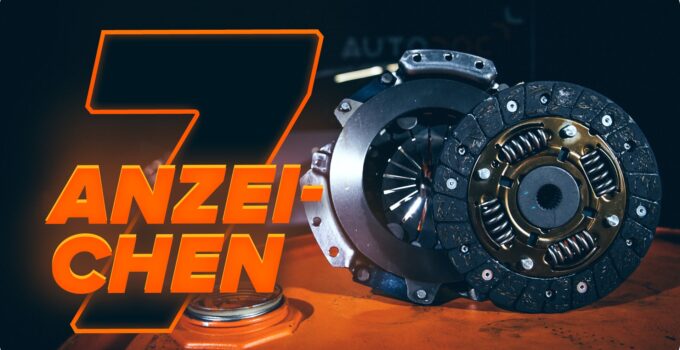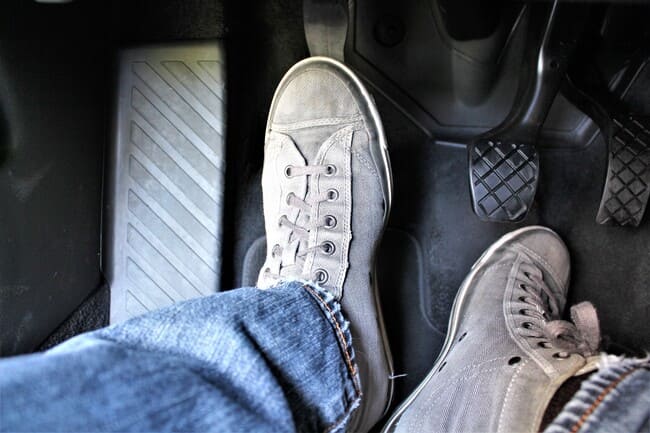
The clutch is the most important component of the drive system, as without it it would not be possible to shift into different gears. With manual gearboxes, the engine is separated from the gearbox by depressing the clutch pedal, which makes it possible to shift into different gears. In the case of automatic transmissions, this is taken over by the vehicle’s automatic system. Another function of the clutch is to compensate for speed differences between the transmission and the engine. Despite the high stress caused by vibrations, pressure and frictional heat, this component is very robust and can achieve a service life of over 200,000 km if you drive well. However, poor driving style by the driver and the increasing age of the car can lead to the clutch breaking earlier. You can find out how to identify a defect in this article.
Contents
Causes of a defective clutch
Since the material is rarely responsible for a defect, especially with high-quality original parts, it is usually up to the driver how long the part will last. Therefore, clutch damage is usually due to the driver’s driving style.
The following causes promote premature wear to towards failure:
- high load
- Driving in city traffic
- Driving with a trailer
- Incorrect operation by the driver:
- Letting the clutch slip for a long time
- Change gear if the pedal is not fully depressed
- Press the clutch too long during short stops, e.g. E.g. step on the pedal at a red light instead of shifting into neutral
- The clutch pedal is constantly touched with the foot while driving
- Accelerate when shifting gears
- shift to a lower gear over several gears if the engine speed is too high
In order to protect this component and prevent a defect, it is important that you pay attention to a few things when shifting gears. The clutch pedal must always be fully depressed and the individual steps of the shifting process must be clearly separated from each other. That means first stepping on the pedal, then changing gears and then releasing the pedal. In addition, it is much easier on the clutch when you are driving on level roads, since the individual steps often cannot be clearly separated from one another, especially when starting off uphill.
Signs of a defective clutch
Your car’s clutch does not usually fail overnight, this process is often gradual and can be identified by various signs.
- ! Loss of power when shifting
- ! Clutch makes noise when pedaling
- ! Vibrations when pressed the clutch pedal
- ! Extended pedal travel< /li>
- !< /i> Smell of burning in the vehicle interior

- !Reduced engine power
- ! Car jerking when shifting
- ! Resistance when switching
- !Clutch is stuck/gears can no longer be engaged or disengaged
- ! Jerky/rough starting process
- ! Clutch slips (engine does not accept gas when released despite increasing speed)
- ! Clutch arrives late
Should you notice the above signs If you notice your car, it is essential to check this component or have it checked by a specialist or a specialist workshop.
How can you check whether the clutch is defective?

With a switch truck, it is possible to check for a defect yourself without much effort. However, great caution is required to avoid causing damage in the end. So if you are unsure before or during the check, it is advisable to have the functionality checked by a specialist or a specialist workshop, since an intact clutch and various other car parts can be damaged in the worst case because the gearbox in this Test something is expected. If the part is in order and does not slip, the flywheel, for example, can be damaged. Therefore, the clutch test is at your own risk. In any case, the safer solution is to have the check carried out in a workshop, since the test can be carried out under safe conditions here. However, should you decide to test the coupling yourself for the time being, it is important that you ensure the best possible test conditions before testing. Here it is very important that the car is on a flat and level surface (e.g. on a large parking lot or yard) and that the inspection is not carried out under difficult conditions. Difficult conditions arise, among other things, when you have driven at a very high speed for a long time or the car was exposed to the freezing cold at night. In addition, there must be enough space around the car so that other road users are not obstructed. Once you have created the ideal conditions, you can start with the coupling test.
Proceed as follows:
- Apply handbrake firmly
- Get out of gear
- Start engine
- Engage at least 3rd gear
- Depress the accelerator pedal and carefully release the clutch pedal
If you stall the engine when you let the clutch come in, then the clutch is fine and there is no damage. However, if the engine just keeps running, the component is most likely worn out or defective and a trip to your trusted specialist workshop is essential to prevent a possible traffic accident or damage to the gearbox.
Adjust the clutch
However, a complete replacement is not always necessary. Sometimes a new setting is enough to restore functionality. If, for example, the clutch no longer separates the engine and transmission properly, only something needs to be adjusted. You can easily test this yourself by letting the engine speed drop, fully depressing the clutch pedal and then engaging reverse gear. This must be possible without great effort and no unusual noises, such as squeaking, must be heard. In addition, the clutch must not drag when you let it come and the grinding point at which the car starts must not be at the end of the pedal travel. However, if this is the case, the part must be adjusted.
Conclusion
Although the clutch is a wearing part, most defects are mainly due to the driver’s driving style. With a particularly careful driving style, you can easily cover 200,000 km or more without this component having to be replaced or repaired. It is particularly important here that the individual steps of the shifting process are carried out clearly separately from one another, and that the clutch is not permanently depressed and not allowed to slip. However, should you notice any signs of a defect or wear of this part on your car, such as a squeaky, smelly or stiff clutch, an inspection is urgently needed. You can do this yourself with particular care, but we strongly recommend that you have this done by a specialist or a specialist workshop in order to avoid possible consequential damage to the gearbox and the clutch.
